When my neighbor installed a custom mahogany door with hand-forged ironwork, I saw how how much it transformed their whole front entrance. Custom garage doors sure look amazing, but they're also solving real problems that standard doors can't handle.
Key differences every homeowner should know:
- Bespoke Solutions: Ideal for non-standard openings (like my friend's 18-foot wide carriage house), custom doors use reinforced materials that withstand specific climate challenges. Expect thicker steel (16-24 gauge vs standard 28) and commercial-grade weatherstripping 1.
- Pre-Fab Advantages: Stock doors shine when you need quick replacements. I recently helped a client install a steel sectional unit in one weekend for under $1,800. That’s half the cost of custom 2.
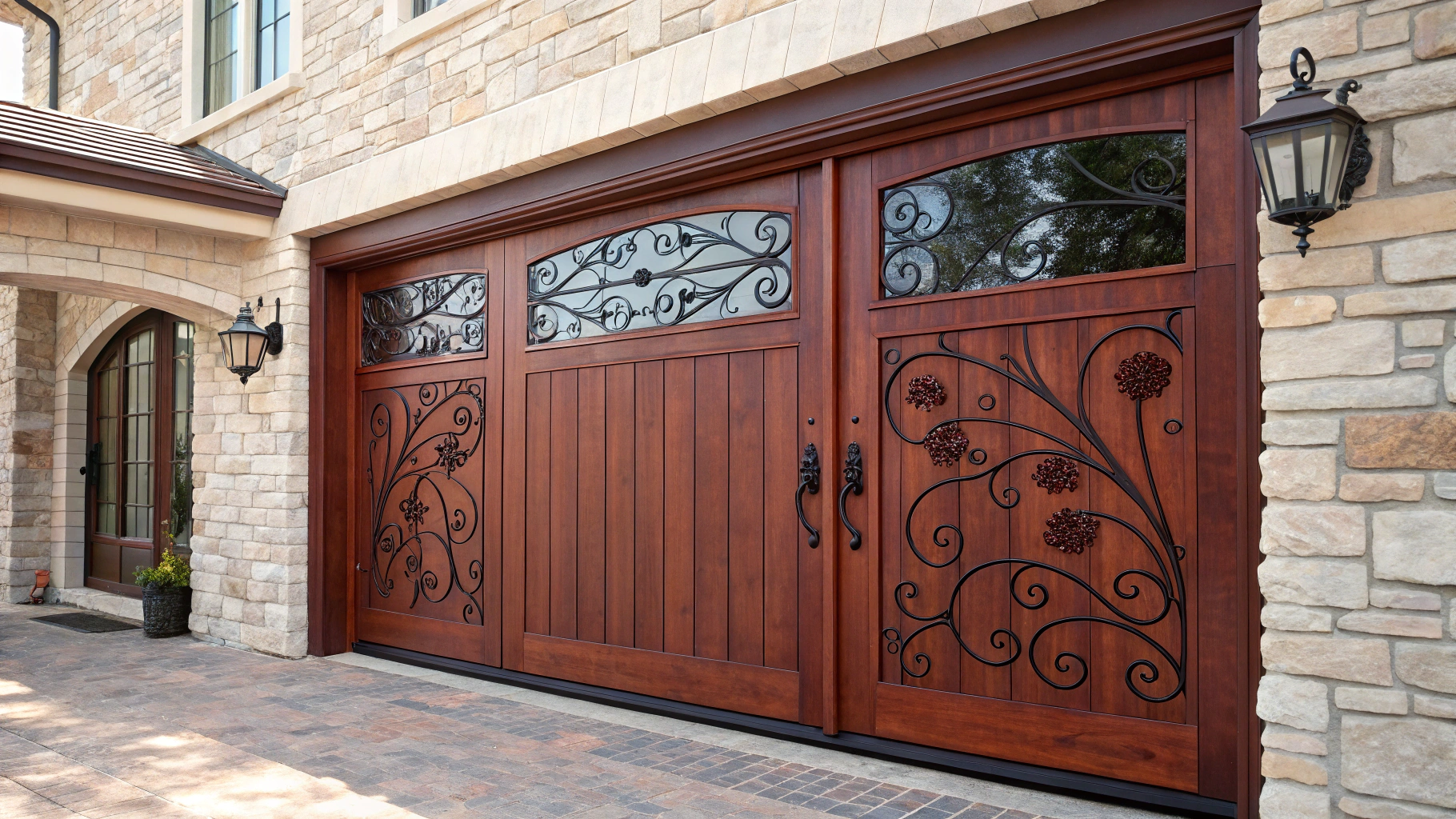
Pro Tip: Hybrid approaches exist. Several manufacturers now offer semi-custom sizing on standard designs, giving you that custom look while still being affordable 3.
Space Savers vs Statement Makers: Panel Style Showdown
The upright vs sectional debate isn't just about looks, but about making the most of your garage space. Consider these factors from my field experience:
Upright Single-Panel Doors
- Best For: Historic homes, detached garages with ample clearance
- Watch For: Hinge maintenance (bi-annual lubrication required) and hurricane risks in high-wind zones 4
Traditional Sectional Doors
- I Choose When: Modern homes need insulation (R-18+ polyurethane cores) or smart tech integration
- Client Example: A Boston homeowner saved 23% on heating bills after switching to insulated sectional panels 5
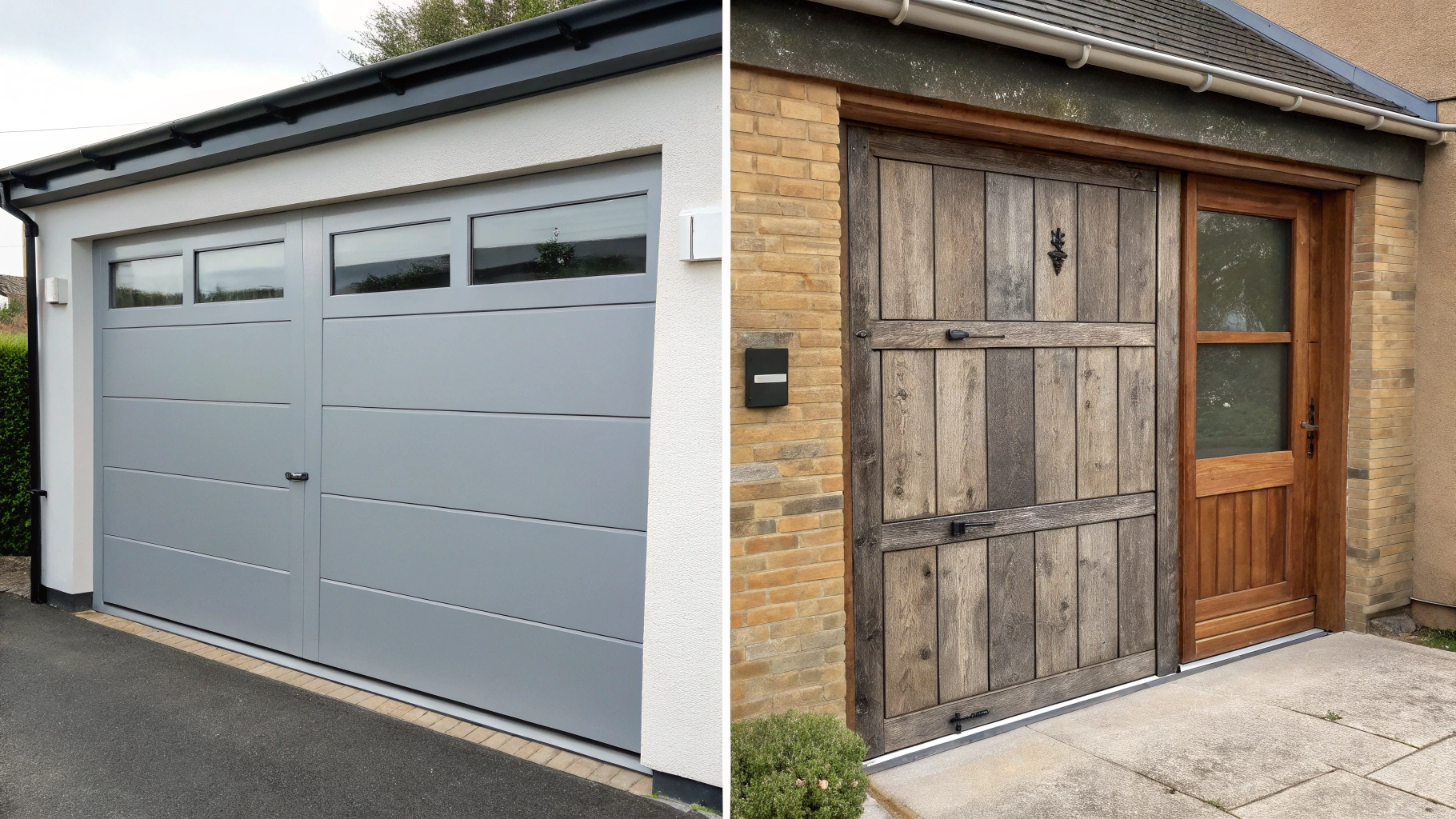
Insulation Deep Dive: Your Secret Climate Weapon
Last winter's polar vortex proved insulation matters. Here's what technicians wish you knew:
- Core Types
- Polyurethane Foam: Expands to fill gaps, reduces noise 30% (based on ASTM E90 tests 6), R-22 rating
- Polystyrene Boards: Budget-friendly but settles over time, R-7 average
- Hybrid Systems: Reflective barriers + foam layers combat both Texas heat and Minnesota cold
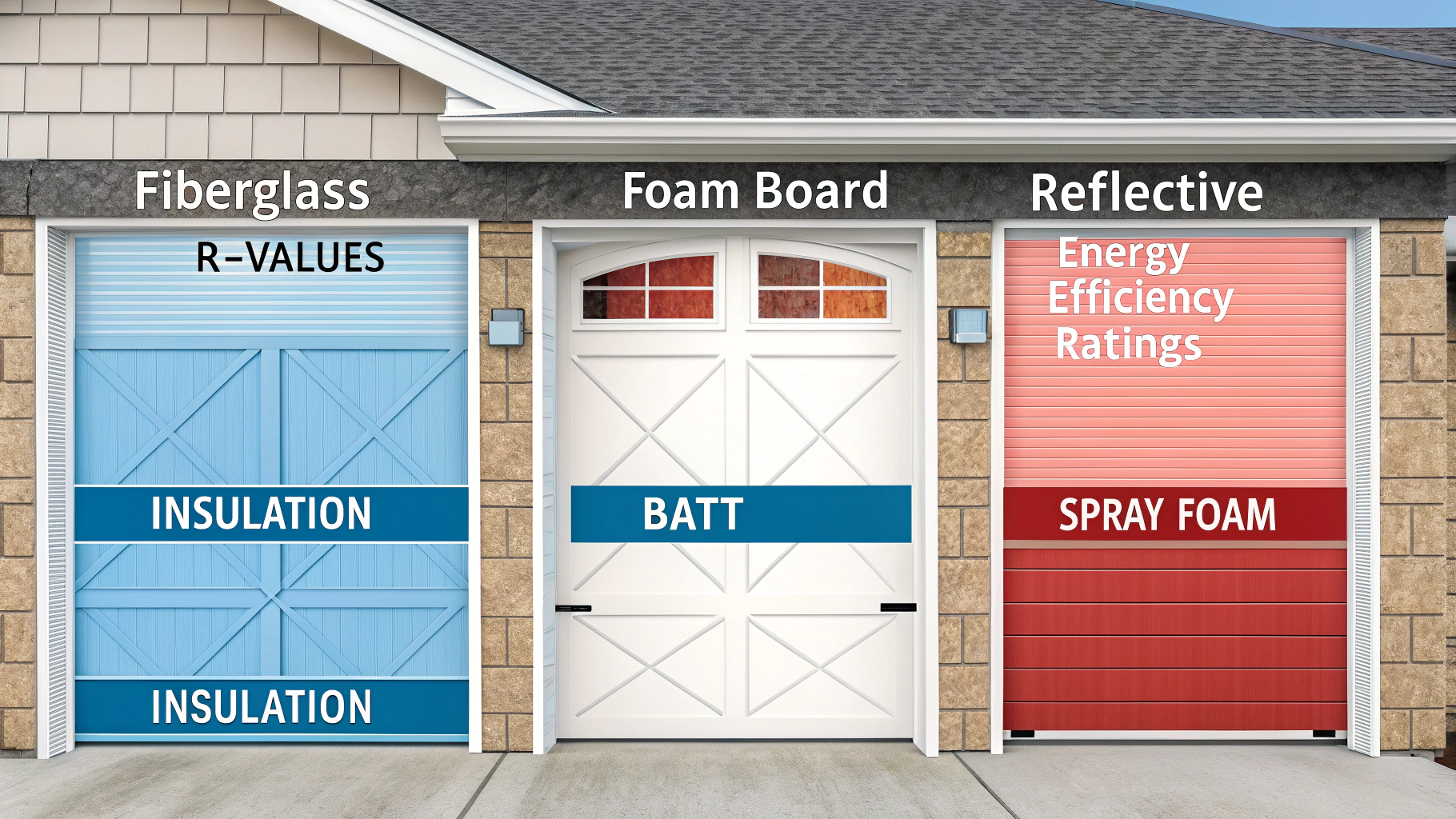 2. Climate-Specific Picks
2. Climate-Specific Picks
- Coastal Areas: Fiberglass with zinc-coated hardware resists salt corrosion (G90 coating recommended 7)
- Tornado Alley: Wind-rated steel sectionals with 3-inch thick cores
When Repair Beats Replacement: Smart Panel Solutions
After a tree limb dented my client's 2-year-old steel door, we saved $1,200 by replacing just the damaged panel. Key replacement factors:
- Match Game: Bring old panel measurements (within 1/8") and manufacturer info to suppliers
- Cost Reality Check:
- Steel Panels: $275-$650 installed
- Wood/Composite: $450-$1,100
- Full Replacement Threshold: Consider at 15+ years or multi-panel damage 8
Material Guide: Performance Where It Matters
Steel
- My Top Pick For: Security (withstand 150mph winds 9), fire resistance (20-minute rating 10)
- Skip If: Coastal living (unless galvanized)
Fiberglass
- Surprise Win: Miami client's 8-year-old door shows zero rust vs neighbors' steel doors
- Drawback: Limited cold-weather insulation
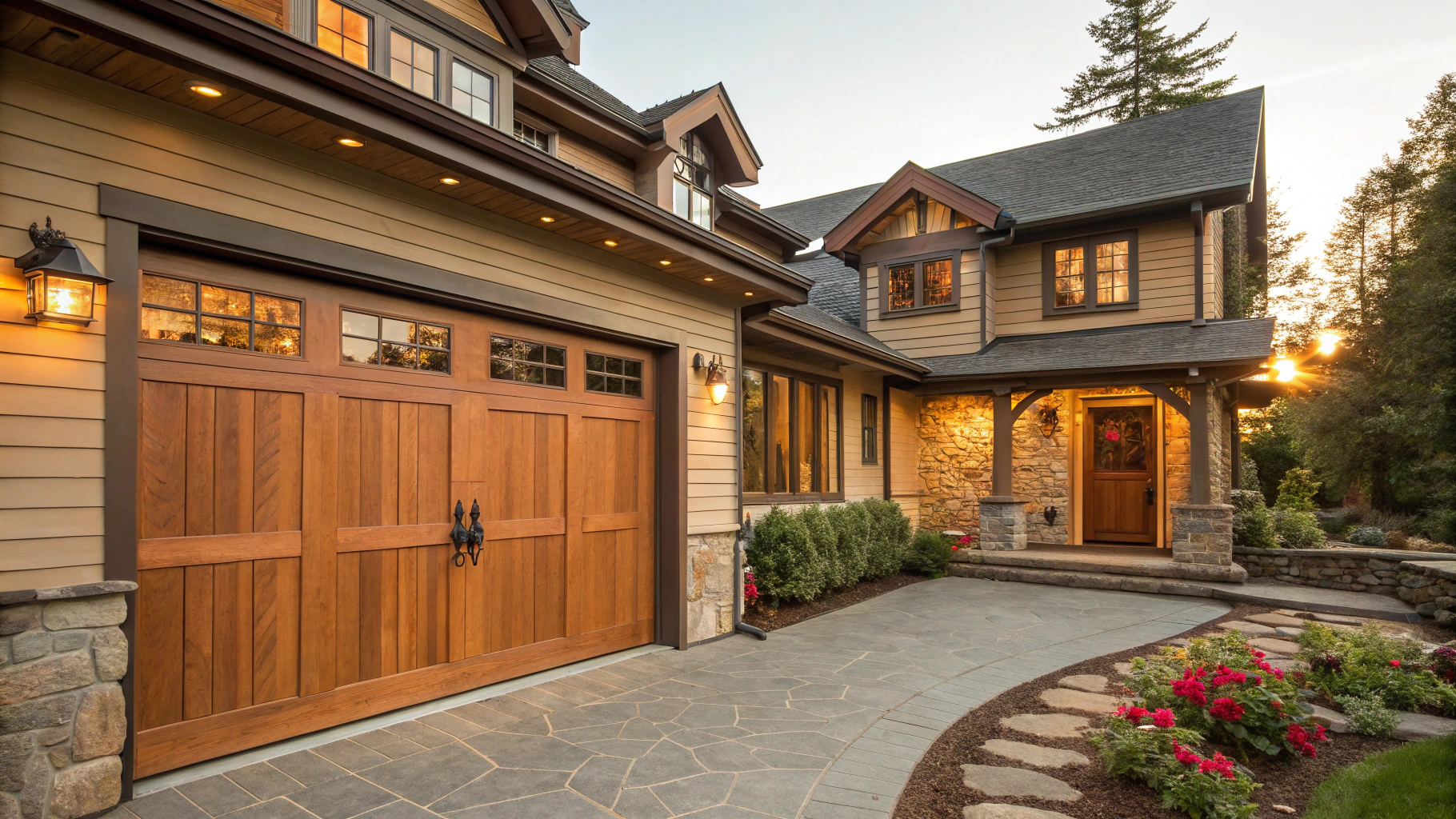 Wood
Wood
- Historic Charm Tax: Requires annual sealing in wet climates
- New Alternative: Composite panels mimicking cedar at half the upkeep
2025 Innovations: Smarter, Stronger, Greener
- Security Upgrades
- AI cameras detecting loitering (67% faster response than motion sensors 11)
- Self-sealing panels that auto-close minor gaps during storms
 2. Eco-Advances
2. Eco-Advances
- Bamboo composite panels (42% lower carbon footprint than traditional wood 12)
- Solar-ready tracks charging openers via daylight
The Bottom Line: Your Home's Formula
- Prioritize climate needs first - insulation R-value and weather resistance
- Budget 15-25% extra for hurricane/earthquake reinforcements in risk zones
- Verify local codes: Attached garages need fire-rated doors (IRC R302.6 13)
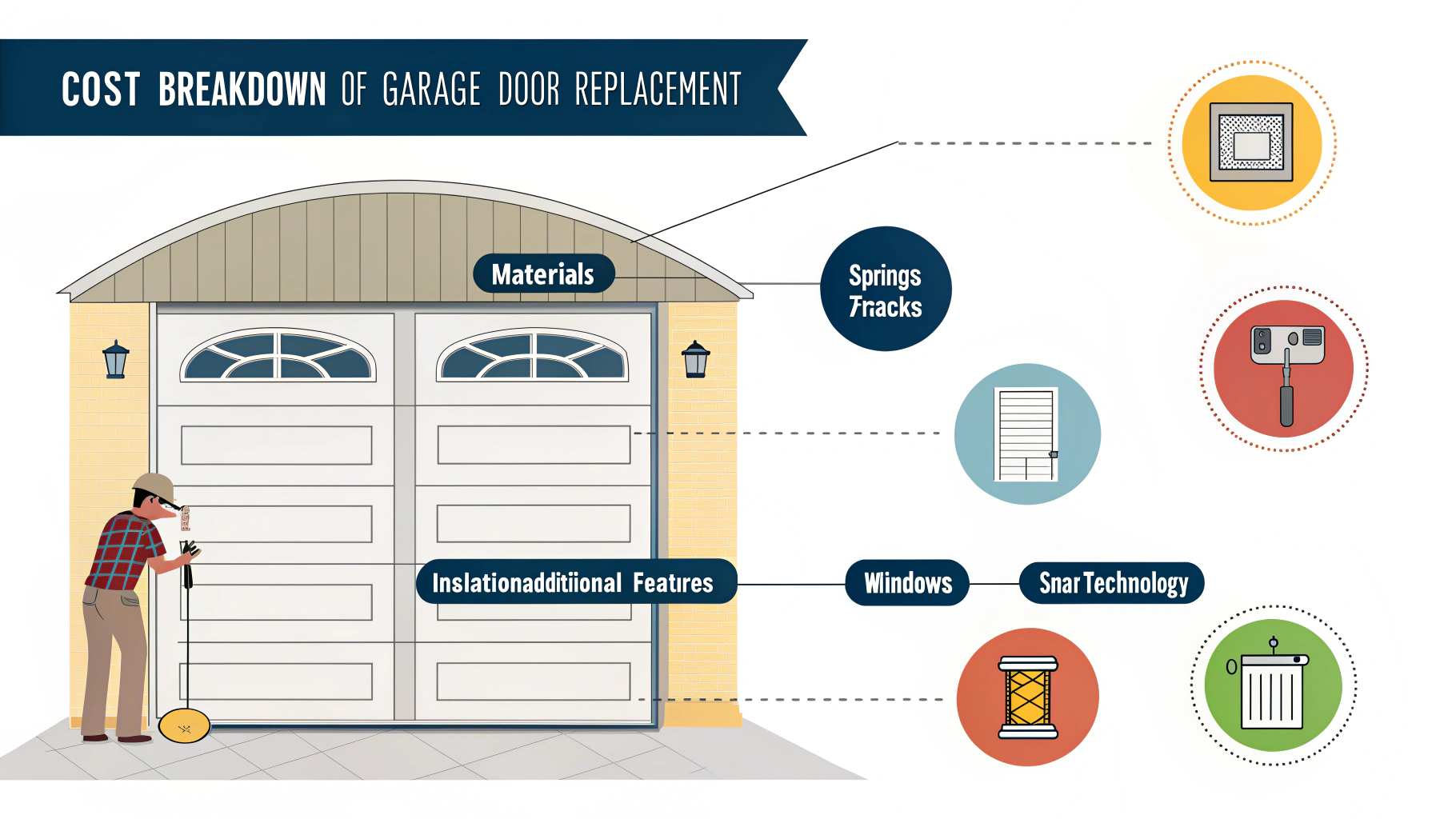 Whether you're trying to match the character of an old Craftsman home or fitting into a modern smart house setup, your garage door should solve problems you didn't know you had. The right panels don't just protect your cars, they fortify your entire home against whatever nature (or raccoons) send their way.
Whether you're trying to match the character of an old Craftsman home or fitting into a modern smart house setup, your garage door should solve problems you didn't know you had. The right panels don't just protect your cars, they fortify your entire home against whatever nature (or raccoons) send their way.
 [NADRA 2025 Cost Index Reports]
[NADRA 2025 Cost Index Reports]
